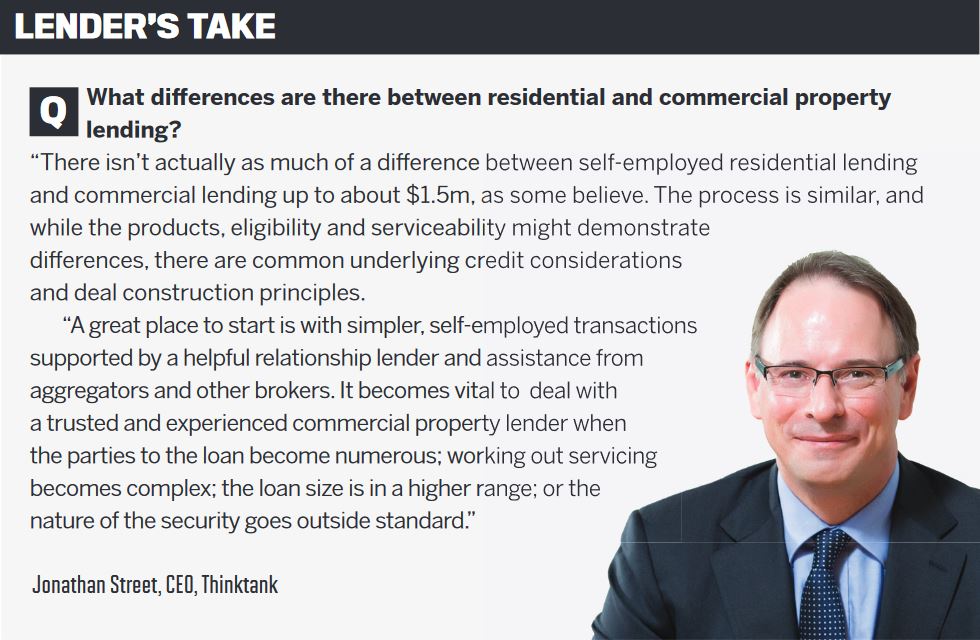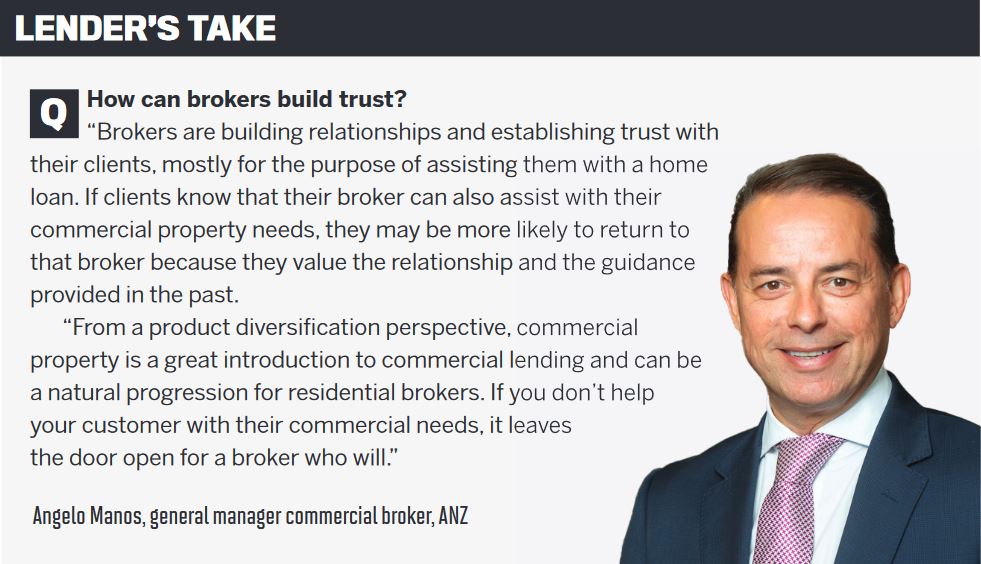In the shadow of the COVID-19 pandemic, the commercial property market in Australia is undergoing transition

Both the first and second quarters of 2020 have presented businesses around the world with considerable challenges. Commercial property has been no exception. Although it’s somewhat better insulated than the retail or residential market, it would be disingenuous to pretend that COVID-19 hasn’t had an impact.
According to ABS figures, finance for commercial property had slumped slightly in the second half of 2019, but this looked set to be on the way back up. While it is expected that COVID-19 will bring figures back down again, the full effect hasn’t yet been felt, and given the uncertainty that surrounds the situation, it’s fair to say that businesses are still wrestling with the full implications.
“We are used to discussing vacancy rates, yields, clearance rates and things like cranes in the sky each month, but all that has suddenly changed,” says Jonathan Street, CEO of Thinktank. “COVID-19 is exacting a heavy toll on our economy. It is our belief that the health and economic crises will peak in the June quarter, and while there will be a recovery in the September quarter it will be soft. It is not until the December quarter that the economy will start to pick up and return to positive growth, with shutdowns becoming a memory and unemployment levels receding.”
Mortgage brokers aren’t immune to these conditions by any means. Though some will be able to make it through the lean times on the basis of existing trail income, there have already been signs of residential property markets around Australia slipping. Accordingly, there has been an increased interest in diversification and a shift towards the commercial market. Intended to help provide mortgage brokers with consistency during the various peaks and troughs of the lending market, diversifi cation remains an attractive prospect for many of those who are looking to expand their palette.
“Up until COVID-19, the commercial property market experienced steady growth and caught the interest of savvy property investors,” says John Mohnacheff, national sales manager at Liberty.
“From office space and shopfronts to warehouses and factories, there are many reasons why customers may seek to finance a commercial property, and many opportunities for brokers to help. While things look very different right now, commercial borrowers still require the expert support of a broker who can help guide them through these uncertain times."
Mohnacheff points to a “surge” in the number of consumers setting their sights on commercial property in recent years.
“As a largely underserviced segment of the market, brokers in this area have the advantage of being able to carve out a strong position in this large market,” says Mohnacheff. “In the current climate, where the stock markets are in flux and reacting to world events, opportunities may emerge for astute commercial property investors.”
Other factors promoting diversification
Angelo Manos, general manager commercial broker at ANZ, notes that there are other contributing factors beyond COVID-19 that could drive diversification.
“If we think back to over 12 months ago after the royal commission, fundamental changes were proposed from a mortgage broker perspective,” Manos says.
“As a result, we saw aggregators encouraging brokers to diversify their income base. A natural extension from residential property is to provide customers with the ability to purchase commercial property. As brokers became confident and competent in commercial property, they further diversified into other commercial lending opportunities.”
Street explains that by diversifying into commercial a broker’s ability to provide customers with other forms of finance as needed is strengthened. They can also benefit greatly from a liations across many lenders, allowing them to source the best lending solution and conditions.
“We have seen a constant trend of mortgage brokers heading into commercial property finance, which we believe will only strengthen during this period of economic instability,” says Street.
“Diversification is a sound option for brokers to reduce the risk of concentrating on one particular income stream and mitigate the risk of the unknown.
“With the maturing of product distribution channels, a contemporary broker can occupy a very similar role to that of a traditional relationship manager in a major financial institution,” Street explains.
“It also provides them with a distinct advantage, as they’re not driven to cross-sell from a singular institutional platform and are essentially unlimited by way of product offerings, recommendations and eventual selection.”
Going the extra mile for borrowers
Though there is obviously work involved in diversifying a portfolio, adapting an existing skill set to a new style of broking might not be as demanding as anticipated. The core qualities that make a good broker tend to be readily transferable.
“When it comes down to it, there are more similarities between residential and commercial property lending than differences,” Mohnacheff says. “For brokers to succeed in either area, they require essentially the same skills: good customer service, sound product knowledge and a willingness to go the extra mile.”
Where the difference lies is in competition, he explains.
“In the residential broker space, customers are spoilt for choice,” says Mohnacheff . “On the other hand, brokers originate only a small percentage of all commercial property loans. So they must ask themselves: why limit yourself to working within a crowded market when there is so much untapped opportunity at your fingertips?”
Manos notes that many of the fundamentals of residential and commercial property lending are the same.
“They are both bricks and mortar – land is the main component and, most importantly, location is absolutely critical,” he says. “Where it differs and where complexity comes into play are the factors that can influence the lease.”
Expanding further, Manos explains that there are different classes of commercial property: office, industrial and retail.
“With commercial property lending, it’s important to understand the profile of the lease, including who the underlying tenant is or may be,” he says. “The key considerations for commercial property lending include the viability of the lease, the attractiveness and versatility of the property, and the leasing business’s ongoing profitability and/or business model.”
Manos points out that the COVID-19 situation provides an object lesson.
“For example, for our hospitality customers, cash flow comes at a risk, and it’s important that you and your client have a good understanding of the viability of both the underlying tenant and the broader industry,” he says.
Mohnacheff adds that maintaining good communication during the current crisis is also crucial.
“The most obvious challenge is navigating the effects that COVID-19 is having on our business community and trying to ascertain the best course of action,” he says.
“What’s most important for brokers across all areas of lending is to continue communicating with customers and ensuring they are aware of all the ways that you can help.”
Going the extra mile for borrowers
2020 has presented its challenges, and the immediate future is uncertain, but Mohnacheff believes that looking ahead there will still be positives.
Street adds, “A pick-up in business activity should also equate to a resumption in demand for industrial property. This is in part due to the enforced social isolation which has accelerated moves to online shopping, spiking the demand for warehousing space and expansion of logistics.
“It’s also reasonable to expect smaller retail units in inner-city areas to recover. However, shopping centre tenants are likely to suffer in the near term, and landlords are having their challenges as tenants both big and small push back on leasing costs.”
Manos says, “What we are going through with COVID-19 is unprecedented. However, if the Australian economy returns to what we consider as ‘normal’ and the low interest rate environment continues, it’s likely the demand for commercial property will remain solid. Notwithstanding the COVID-19 impact, Australian property is still an attractive investment class.”






